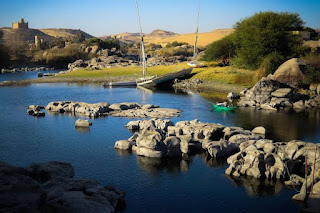Heissa Village:Magical Egyptian Island
Heissa village
The Nubian island of Hisa village, east of Aswan city within the Aswan governorate, is one among the oldest Nubian islands, between the Aswan High Dam and Aswan Reservoir, next to the Philae Temple, and the island was chosen to hold a tourism festival, parties and the festival of Egyptian personalities.
One of the oldest of these is the Nubian Aswan Islands, and the name goes back to King Hess, one of the most important kings of the Seventh Dynasty.The island of Hessa is located east of the city of Aswan. The island was a burial ground for the priests and priestesses who were working on the island of Hessa and the island of Philae, which is very close to it, as they were a natural mine for extracting stones and wood, which were later transported across the river to build the Saqqara pyramid.
The features of the island of Hessa
The island was in the past a burial place for priests who were working on the island, and the neighboring island of Philae, and the pharaohs were extracting stones and wood from it to build the pyramids, and they were moving across the river to transport these materials to where they wanted, and the island was full of many Pharaonic monuments and inscriptions As for the island's houses today, they are built on the rocks of the mountains surrounding the river, and are an additional aesthetic manifestation of the nature of Hessa, and those houses are surrounded by water and desert mountains from all sides, and that nature provides fresh air for the residents, and the island's climate is moderate in winter, and high heat in summer.
Professions of Hesa people
 |
The inhabitants of the island practice fishing, and rent boats to visitors to the island, while carpentry works are among the occupations that the people depend on as a source of livelihood, in addition to making pottery from the silt of the Nile, cultivating palms, peanuts, and legumes from okra, peas, and cowpeas, to Besides, Nubian women make accessories, which often consist of colored beads, and some drawings inspired by the surrounding nature, and women also introduce folk concepts in making jewelry.
Customs and Traditions on the Island of Hessa
Despite the difficult life experienced by the islanders, they practice rituals and traditions that bring them into an atmosphere of enjoyment and joy, including: The people of the newlyweds slaughter and cook a calf, then serve it alongside other Nubian foods to the guests, while the Nubian singing rises, and the traditional dances that characterize the islanders are held.
Remembrance celebrations, the birth of the Prophet every year by holding remembrance sessions, listening to supplications, and the Prophet’s praise.
The service reality of the island of Hesa
Residents on the island of Hesa complain about the lack of services provided to them by the competent official authorities. On the island, there is only one health unit, without a permanent health staff, which often drives the population to transfer patients in dangerous situations. To Aswan Hospital via boats, which is their only way to get out of the island or enter it, and this exacerbates the suffering of patients and their families, and the small island in general does not have any other commercial or service facilities, while residents go to the only grocery on the island to buy some of their needs.
Hesa Houses
 |
| Heissa 🏘️ |
The houses of the island of Hessa are of bright colors, and are distributed on the rocks of the small mountain in beautiful harmony, surrounded by a captivating beauty and purity that is difficult to find elsewhere, and the mountains and the river surround them from all sides, which made the pollution rate decrease and the purity of the air increase, which is a climate Healthy and free from diseases, especially for patients with rheumatism and joint pain, the island is warm in winter and hot in summer.
They are decorated on the outside and inside with brightly colored drawings, and inlaid with stones from the mountain to add joy, as well as combine in their architecture Pharaonic, Coptic and Islamic patterns.
If You interested I recommend check This Link: https://heissacamp.com/



